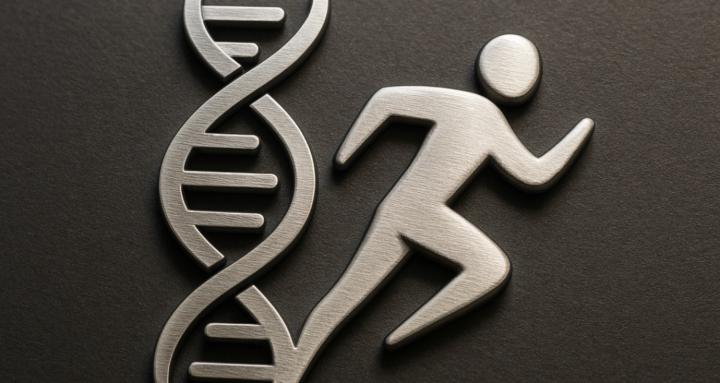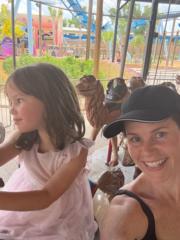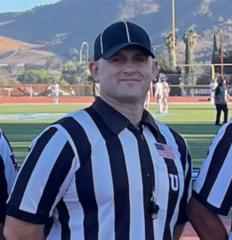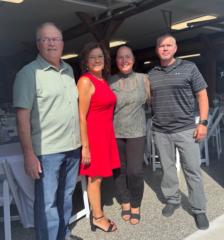21d • Cellular Medicine
Pulses Before Pushes: The Smarter Path to Fat Loss and Repair
Everyone wants to crank the GH dial. I get it. But if the “amp” (your terrain) is noisy insulin resistance, chronic inflammation, sluggish thyroid, chaotic sleep you’re just amplifying distortion. The biology is straightforward: outcomes are receptor-limited, terrain-dependent, and circadian-coded. Fix the signal, then turn up the volume.
Let’s clear two myths fast so we don’t build on sand. First, BPC-157 has only shown growth-hormone-receptor upregulation in rat tendon cells in a dish. That’s a clue for tendons in vitro, not a green light to claim gut, fat, muscle, or human receptor changes. Second, GH’s fat-loss effect is systemic. Putting shots in the belly doesn’t melt belly fat. In fact, repeating the same injection site can create lipoatrophy. Terrain first. Pulses before pushes. No spot-reduction fairy tales.
Here’s an example of framework to think about it. Start by naming the target: are we rebuilding a tendon muscle unit, or are we re-composing body fat and muscle? If both matter, prioritize the injury pain and function come first. With the target set, run a short terrain tune so the GH axis has a clean runway: smooth glucose, lower CRP drivers, verify thyroid adequacy, anchor sleep, and tame free fatty acids with a simple AM walk. Only then choose the tool. If insulin resistance or high cortisol is on the board, favor physiologic pulses with GHRH/GHRP. If someone is lean, euglycemic, low-inflammation, and under clinical supervision, low-dose GH may be considered. Treat BPC-157 as a cytoprotective adjunct with modest expectations; do not assume in-vivo receptor priming. Place timing to respect biology secretagogues early night or right after rehab, GH scheduled to minimize glycemic drag and rotate injection sites. Then measure, learn, and iterate every one to two weeks using signals you actually trust.
Use this little map to set your route before touching the throttle:
START -> Choose Goal|- A) Injury/Repair`- B) Body Recomp
In practice, the injury/repair path looks like this: clear red flags; run the 14-day terrain tune; choose pulses when insulin or stress is the choke point and reserve clinician-supervised GH for lean, low-inflammation cases; keep BPC-157 as an optional adjunct with clear limits; rebuild tissue on the back of training start with pain-gated isometrics, progress to eccentric-dominant work, then tempo/isotonic and energy-system layering; protect sleep; monitor function, pain, ultrasound if available, HRV/sleep, CGM, and common side-effects like edema or paresthesias; adjust with intent.
Body recomposition follows the same logic, with a different bias. Gate by phenotype first: if insulin-resistant or riding high evening cortisol, secretagogues come first; if lean and euglycemic, GH may be considered under supervision but never for spot reduction. Fix the levers that move body fat in the real world: fiber at or above 40 g/day, carbs front-loaded, dinner wrapped at least three hours before bed, a short AM walk to keep NEFA in check, thyroid aligned, CRP drivers trimmed. Pair training and feeding intelligently: AM low-intensity to set the tone, PM fed lifting that hits a leucine threshold. If CGM time-above-range creeps up, edema shows, wrists tingle, or sleep frays, you pivot less dose, less frequency, or back to pulses.
To make this easy, I built two tools you can drop straight into your workflow. The one-pager decision flow gives you a fast scan: confirm the evidence anchors, pick the lane, check that terrain tune is active, then move. The coach checklist keeps you and your clients honest so you don’t skip the boring things that actually create adaptive space.
A. 14-Day Terrain Tune
[ ] Sleep 7–9 hours on a consistent schedule
[ ] Fiber ≥40 g/day; hydration and electrolytes dialed
[ ] CGM or fasting trend smoothing; especially lower evening variability
[ ] Thyroid adequacy verified or optimized
[ ] Short AM NEFA-control walk; 8–12k steps/day[ ] Reduce CRP sources (gut issues, alcohol, sleep debt)[ ] Collagen 10–15 g + vitamin C 50–100 mg 45–60 min before rehab loading
[ ] Devices like red light/PEMF support loading; they don’t replace it
B. Modality Selection Gates
[ ] Insulin-resistant or high-cortisol phenotype → GHRH/GHRP pulses first
[ ] Lean, euglycemic, low-inflammation → GH may be considered under clinician supervision
[ ] BPC-157 allowed as adjunct; do not claim in-vivo GH-receptor upregulation
C. Dosing & Timing Hygiene
[ ] Secretagogues early night or immediately post-rehab
[ ] GH scheduled to minimize glycemic drag; rotate injection sites
D. Monitoring & Safety
[ ] Weekly: CGM TIR/TAR/mean glucose; edema/paresthesias/CTS check; BP; morning HR/HRV
[ ] Biweekly: performance metrics (key lifts, jump/grip), pain/function scales
[ ] Stop/adjust triggers: time-above-range up >5% from baseline, edema/CTS, sleep fragmentation, performance drop
E. Communication & Consent
[ ] Educational use only; no dosing or sourcing advice
[ ] No spot-reduction or site-targeting claims
[ ] Evidence boundaries documented (tenocyte in vitro for BPC-157; systemic GH effects; rotate sites)
This is how we honor the ethos: simplicity on the far side of complexity. We keep the mitochondria and the message intact, we sequence the work, and we let the feedback loop lead. Terrain first, then tool. Systems, not silos.
16
10 comments

skool.com/castore-built-to-adapt-7414
Where science meets results. Learn peptides, training, recovery & more. No ego, no fluff—just smarter bodies, better minds, built to adapt.
Powered by





